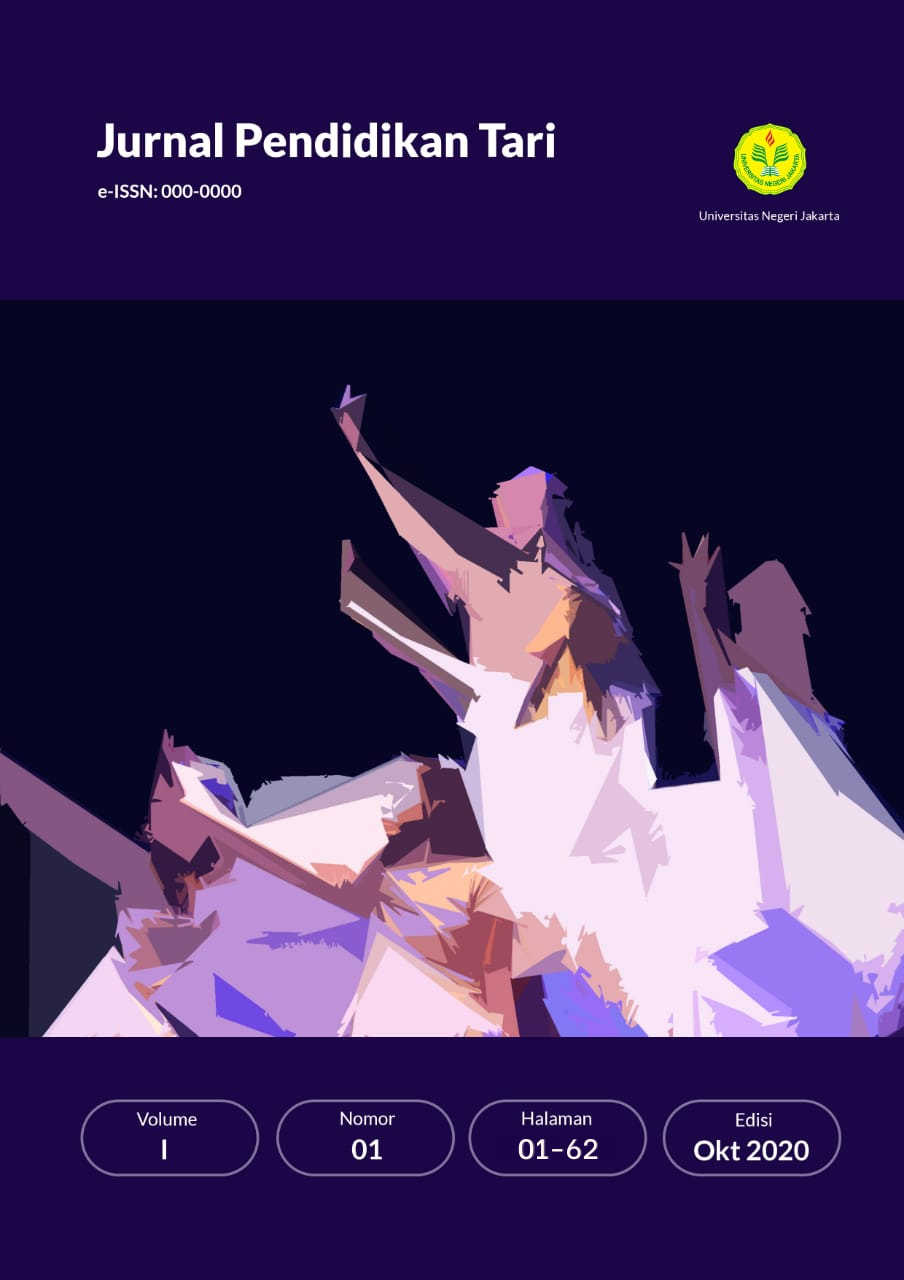The Representation Of Patih Gajah Mada's Leadership in Leading the Bhayangkara Force Through "TANDYA" Dance Piece, Using the Methods of Construction by Jacqueline Mary Smith-Autard
DOI:
https://doi.org/10.21009/JPT.113Keywords:
Leadership, Gajah Mada, Bhayangkara ForcesAbstract
The purpose of the Dance Works aimed to Representation the Leadership of Patih Gajah Mada in Leading the Bhayangkara force into the form of TANDYA dance works.This dance work entitled "Tandya" which used Methods of Construction 1–8 Jacqueline Mary Smith-Autard in his book entitled Dance Composition (A practical guide to creative success in dancing making); Stimuli for dance, Motif into Composition, Motif into Composition for a group, The dance form, Elements of Construction, Style, Improvisation in the process of composition, Alternative and experimental approaches in dance composition.. The process in manifesting dance works through idea searching, dance stimulation, eksploration, improvisation, formation, evaluation selection and sublety. Dance Works enriches the treasury of the East Javanese style Motifs, which comes from Malang style and Bayuwangi style. motif east javanese traditions which is given variations to the subject of the motion,among others:Tanjak Putra Gagah became developed into Tanjak Pengkor, Ukel is developed into a Ukel ngeruji, Laku Nyiji is developed into Laku Ngawang . ulap-ulap developed into ulap-ulap Naga, Cangkah Paju, and Ngeber Kerep. TANDYA's dance works were performed on Tuesday, 9 July 2019 at the Plaza of the Jakarta State University with the duration of 31:03 minutes.


